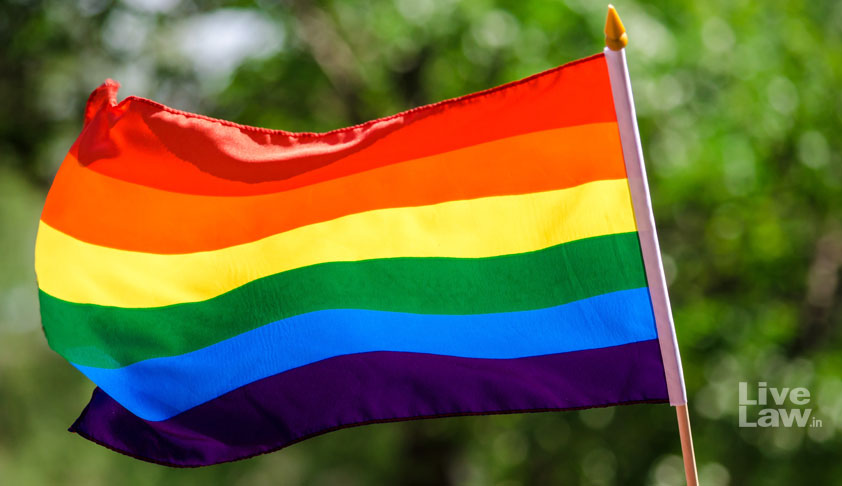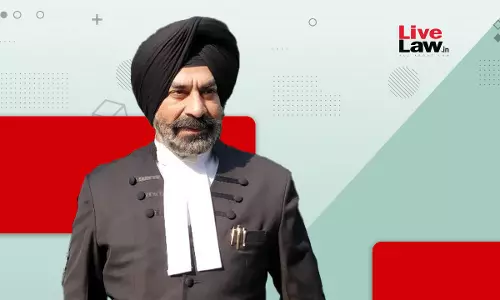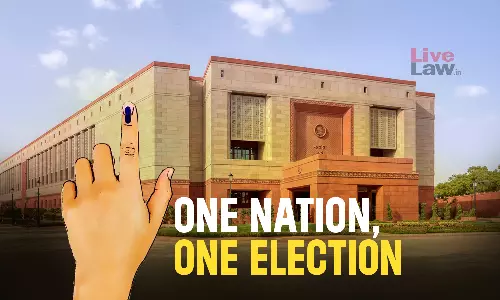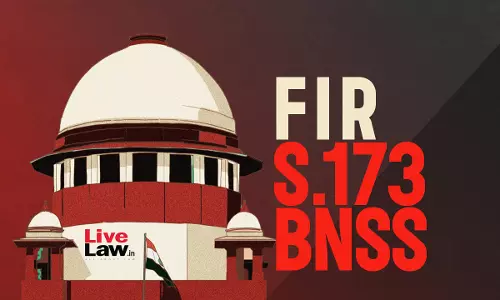Privacy Judgment: A Salvo In The Fight Against Discrimination Against The LGBTQ Community in India

The hype over the latest decision on the Right to Privacy in India, delivered in Writ Petition (Civil) No. 494 of 2012 by a 9-Judge Bench of the Hon'ble Supreme Court of India in the case of Justice A. K. Puttaswamy (Retd.) & Anr. v. Union of India &Ors.[1], has only just begun. Much will be written about the judgment in the days to come. Perhaps it will be trolled and extolled in...
The hype over the latest decision on the Right to Privacy in India, delivered in Writ Petition (Civil) No. 494 of 2012 by a 9-Judge Bench of the Hon'ble Supreme Court of India in the case of Justice A. K. Puttaswamy (Retd.) & Anr. v. Union of India &Ors.[1], has only just begun. Much will be written about the judgment in the days to come. Perhaps it will be trolled and extolled in equal measure, and will undoubtedly be squeezed for every possible drop of political mileage. Yet, for all the screams and tears that may or may not follow it, the judgment deserves to be much-lauded for its expansive observations on the many nuanced facets of privacy and dignity and, in no mean measure, for its final and decisive overruling of that historical blight on our national conscience, namely the judgment in ADM Jabalpur v. Shivakant Shukla[2]. I will leave the onus to shower plaudits upon the Hon'ble Supreme Court for this much-deserved and much-belated correction of such a judicial travesty at the hands of others. Through this article, I wish to draw attention to what, in my opinion, is a vital fillip to the continued fight of the LGBTQ community and its supporters against bigotry, prejudice and downright existential denial.
2009 and 2017 may well be considered as marquee years for the LGBTQ movement in India. In 2009, the Delhi High Court decided the case of Naz Foundation v. Government of NCT of Delhi[3] by declaring Section 377 of the Indian Penal Code as unconstitutional to the extent that it criminalized consensual sexual acts of adults in private. This was especially significant, in that it effectively decriminalized consensual non-heterosexual sexual intercourse (or, for that matter, heterosexual non-vaginal sexual intercourse) between adults. The High Court found Section 377 to be violative of Articles 14, 15 and 21 of the Constitution of India, thereby proclaiming the same to be arbitrary, discriminatory and opposed to the right to life guaranteed to all natural persons and citizens in India. The Section was saved to the extent that it could continue to be used to punish non-consensual and non-vaginal sexual intercourse involving minors. However, the judgment of the Delhi High Court was ultimately set aside by a Division Bench of the Hon'ble Supreme Court in a judgment which, in the most humble opinion of the Author, appeared to consider the members of the LGBTQ community to not be numerous enough to be seriously threatened by Section 377. The following telling observation of the Hon'ble Supreme Court, in its judgment in the case of Suresh Kumar Koushal v. NAZ Foundation[4], showed one of the points in respect of which their Lordships of the Hon'ble Supreme Court found fault with the judgment of the Delhi High Court:
“…the Division Bench of the High Court overlooked that a miniscule fraction of the country's population constitutes lesbians, gays, bisexuals or transgenders and in last more than 150 years less than 200 persons have been prosecuted (as per the reported orders) for committing offence under Section 377 IPC and this cannot be made sound basis for declaring that section ultra vires the provisions of Articles 14, 15 and 21 of the Constitution.”[5]
(Emphasis mine)
In all fairness, Their Lordships of the Supreme Court examined several judicial precedents before arriving at its ultimate conclusions and upholding the constitutionality of the much maligned Section 377. However, with great respect, I must depart from the numerical reasoning of Their Lordships. Whether or not the LGBTQ community today constitutes a substantial minority or a miniscule one, the fundamental rights to life and equal treatment in the eyes of law are guaranteed to every person within the territory of India. While the founding fathers of our Republic may perhaps not have contemplated at the time the protection of those relegated to the minority based on their sexual preference, it is my view that the idea of protecting minorities, in all the evolving forms of the term, within the bounds of a rational, reasonable and dynamic rule of law, is embedded in the organic skein of our Constitution. It is hardly a semantic somersault on my part to describe our Constitution as organic. In the Justice A. K. Puttaswamy (Retd.) judgment, His Lordship Dr. Justice D. Y. Chandrachud, writing for himself along with Their Lordships Mr. Justice J. S. Khehar, the Hon'ble Chief Justice of India, Mr. Justice R. K. Agarwal and Mr. Justice S. Abdul Nazeer, underscored the malleability of our Constitution with characteristic eloquence thus:
“This Court has not embarked upon an exhaustive enumeration or a catalogue of entitlements or interests comprised in the right to privacy. The Constitution must evolve with the felt necessities of time to meet the challenges thrown up in a democratic order governed by the rule of law. The meaning of the Constitution cannot be frozen on the perspectives present when it was adopted. Technological change has given rise to concerns which were not present seven decades ago and the rapid growth of technology may render obsolescent many notions of the present. Hence the interpretation of the Constitution must be resilient and flexible to allow future generations to adapt its content bearing in mind its basic or essential features.”[6]
The above observations reflect a desire at the highest levels of the Judiciary to eschew static and parochial societal mores, many of which, such as Section 377 of the Indian Penal Code, 1860, were imposed upon our ancestors long before we even had a national identity of our own, much less political franchise. This desire is further illustrated in the views of the five Judges named above on the Suresh Kumar Koushal judgment; views that will no doubt be a cause for celebration for the LGBTQ community and their supporters, while perhaps being a cause célèbre for political commentators and conservative naysayers. Besides taking issue with the observations in Suresh Kumar Koushal about the lower numbers of the LGBT population in India, and about the less than 200 persons prosecuted under Section 377 in the last more than 150 years, Their Lordships also reproduced the following observations from that earlier judgment:
“In its anxiety to protect the so-called rights of LGBT persons and to declare that Section 377 IPC violates the right to privacy, autonomy and dignity, the High Court has extensively relied upon the judgments of other jurisdictions. Though these judgments shed considerable light on various aspects of this right and are informative in relation to the plight of sexual minorities, we feel that they cannot be applied blindfolded for deciding the constitutionality of the law enacted by the Indian Legislature.”[7]
Commenting on the propriety of these observations, Their Lordships in Justice A. K. Puttaswamy (Retd.) have observed as under:
“Neither of the above reasons can be regarded as a valid constitutional basis for disregarding a claim based on privacy under Article 21 of the Constitution. That “a miniscule fraction of the country’s population constitutes lesbians, gays, bisexuals or transgenders” (as observed in the judgment of this Court) is not a sustainable basis to deny the right to privacy. The purpose of elevating certain rights to the stature of guaranteed fundamental rights is to insulate their exercise from the disdain of majorities, whether legislative or popular. The guarantee of constitutional rights does not depend upon their exercise being favourably regarded by majoritarian opinion. The test of popular acceptance does not furnish a valid basis to disregard rights which are conferred with the sanctity of constitutional protection. Discrete and insular minorities face grave dangers of discrimination for the simple reason that their views, beliefs or way of life does not accord with the ‘mainstream’. Yet in a democratic Constitution founded on the rule of law, their rights are as sacred as those conferred on other citizens to protect their freedoms and liberties. Sexual orientation is an essential attribute of privacy. Discrimination against an individual on the basis of sexual orientation is deeply offensive to the dignity and self-worth of the individual. Equality demands that the sexual orientation of each individual in society must be protected on an even platform. The right to privacy and the protection of sexual orientation lie at the core of the fundamental rights guaranteed by Articles 14, 15 and 21 of the Constitution.
The view in Koushal that the High Court had erroneously relied upon international precedents “in its anxiety to protect the so-called rights of LGBT. persons” is similarly, in our view, unsustainable. The rights of the lesbian, gay, bisexual and transgender population cannot be construed to be “so-called rights”. The expression “so-called” seems to suggest the exercise of a liberty in the garb of a right which is illusory. This is an inappropriate construction of the privacy based claims of the LGBT population. Their rights are not “so-called” but are real rights founded on sound constitutional doctrine. They inhere in the right to life. They dwell in privacy and dignity. They constitute the essence of liberty and freedom. Sexual orientation is an essential component of identity. Equal protection demands protection of the identity of every individual without discrimination.
The decision in Koushal presents a de minimis rationale when it asserts that there have been only two hundred prosecutions for violating Section 377. The de minimis hypothesis is misplaced because the invasion of a fundamental right is not rendered tolerable when a few, as opposed to a large number of persons, are subjected to hostile treatment. The reason why such acts of hostile discrimination are constitutionally impermissible is because of the chilling effect which they have on the exercise of the fundamental right in the first place. For instance, pre-publication restraints such as censorship are vulnerable because they discourage people from exercising their right to free speech because of the fear of a restraint coming into operation. The chilling effect on the exercise of the right poses a grave danger to the unhindered fulfilment of one’s sexual orientation, as an element of privacy and dignity. The chilling effect is due to the danger of a human being subjected to social opprobrium or disapproval, as reflected in the punishment of crime. Hence the Koushal rationale that prosecution of a few is not an index of violation is flawed and cannot be accepted. Consequently, we disagree with the manner in which Koushal has dealt with the privacy – dignity based claims of LGBT persons on this aspect.”[8]
The above views of the Hon'ble Supreme Court are lucid and need no further elaboration at this juncture. These observations will certainly be critical to the debate over the continued existence of Section 377 of the Indian Penal Code in its current form. The Supreme Court has astutely identified the chilling effect of the continuation of the penal provision over sexual self-determination and expression, and has recognized the need to safeguard the latter as a core function of the right to live in privacy and with human dignity. However, as the case of Suresh Kumar Koushal is sub judice before a larger Bench of the Hon'ble Supreme Court in curative petitions, Their Lordships drew the line at the above observations and left the baton of deciding the constitutionality of Section 377, as it stands today, in the hands of the Bench seized with that question.
It is, thus, evident that the portions of the judgment in Justice A. K. Puttaswamy (Retd.) cited above will go down in the annals of our judicial history as strong but non-binding obiter dicta. Be that as it may, there can be no doubt that the words of five out of nine Judges, which incidentally also found favour with His Lordship Mr. Justice Sanjay Kishan Kaul in his separate judgment in the same case, will not and cannot go unnoticed.
[1] Available at http://sci.gov.in/pdf/LU/ALL WP(C) No.494 of 2012 Right to Privacy.pdf, last seen on 24th August, 2017.
[2] (1976) 2 SCC 521
[3] 2010 Cri LJ 94
[4] (2014) 1 SCC 1
[5] Supra 1, at 122 (para 125)
[6] Supra 1, at 263 [para T(3)(G)]
[7] Ibid, at 123 (para 125)
[8] Ibid, at 123-125 (paras 126-128)
Bikram Chaudhuri is Partner and Head of Litigation & Dispute Resolution at Abhay Nevagi & Associates, Advocates[The opinions expressed in this article are the personal opinions of the author. The facts and opinions appearing in the article do not reflect the views of LiveLaw and LiveLaw does not assume any responsibility or liability for the same]





